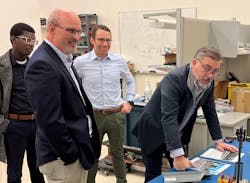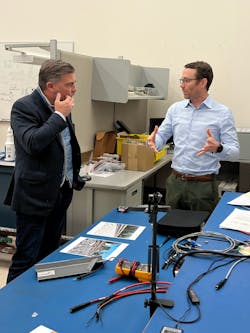Rep. Mike Carey tours L.B. Foster Company
U.S. House of Representatives Member Mike Carey (OH-15) stopped by the L.B. Foster Company for a tour of the company’s Dublin, Ohio facility.
L.B. Foster provides rail, construction, and energy markets with innovative solutions to build and maintain their critical infrastructure. Rep. Carey has special interest in companies like L.B. Foster. He currently serves as a member of the House Ways and Means Committee, as well as on the Ways and Means Subcommittees on Work and Welfare, and Social Security. Additionally, Rep. Carey serves on the Committee on House Administration.
“It was a great experience hosting Rep. Carey and his staff at our facility. Being able to showcase our technologies and products to show how we strive to make the rail industry safer is paramount to our mission as a company,” said William Treacy, executive vice president and chief growth officer at L.B. Foster.
“Hosting the Congressman at our Dublin facility was a terrific time; it was especially great to showcase how the WILD IV technology is providing tangible safety benefits to our customers,” said Michael O’Connell, general manager – Salient for L.B. Foster Company.
The Dublin Ohio facility employs more than 20 highly-skilled workers to oversee the manufacturing and final assembly of electronics, software development and testing, electronics hardware development and testing, mechanical design, electronics field service and machining of mechanical components. The primary products manufactured onsite include L.B. Foster’s Wheel Impact Load Detectors (WILD) and Friction Management control boxes.
L.B. Foster’s WILDs are used to help the North American railroad industry identify unsafe conditions related to railcar wheels. Unsafe conditions that are detected and can lead to a train derailment include overloaded and imbalanced cars, high wheel impacts to the rail and hunting trucks. With the data collected by the WILDs, railroads can prioritize maintenance based on type of defect, resulting in a major reduction in rail and wheel failures and derailments since their introduction, which has ultimately led to greater safety gains in the rail industry overall.

